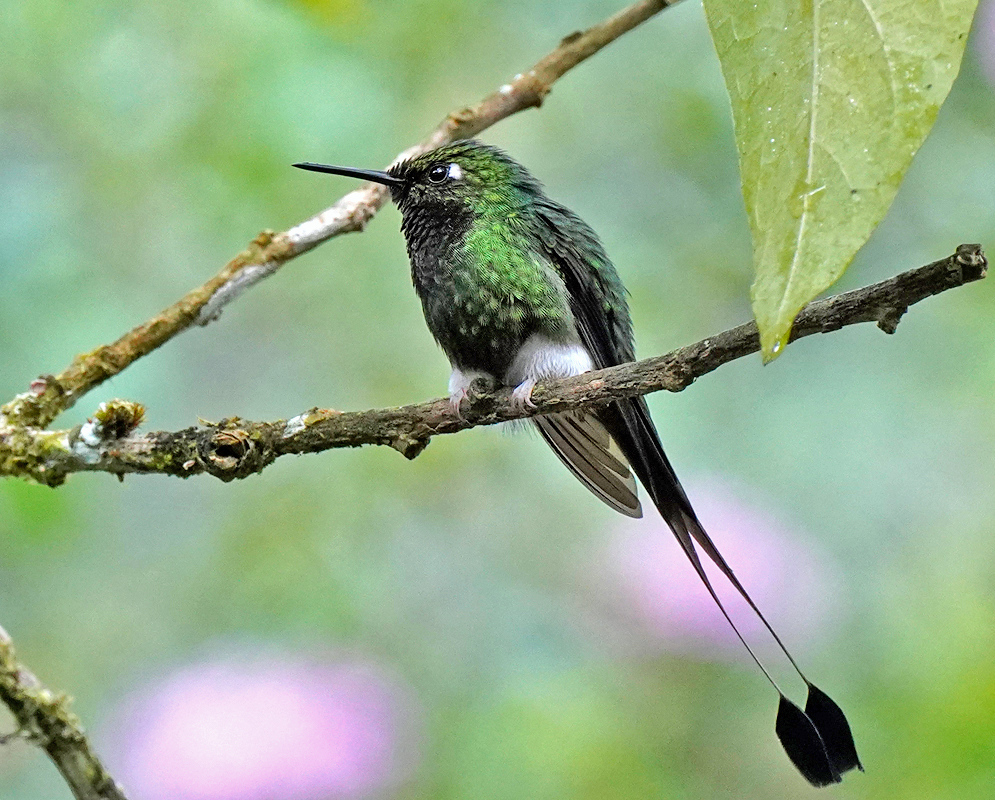This post has 11 Simple Fields-fields attached. Show fields.

The White-booted racket-tail is a member of the hummingbird family found in the Andes of Colombia, Ecuador, and Venezuela. This bird is notable for its distinctive sexual dimorphism, with males sporting elongated tail feathers that have bare shafts ending in oval flags. These feathers, which are straight and do not cross, contribute significantly to the male's total length of 4.3 to 5.9 inches, including the 2.8 to 3.1 inch tail feathers. Females are smaller, measuring 3.0 to 3.5 inches in length. The White-booted racket-tail inhabits the temperate and subtropical regions of the Andes, preferring forest edges but also dwelling in forest interiors and secondary forests. It's most commonly found at elevations between 5,200 and 7,200 feet, although its range extends from as low as 2,000 feet to as high as 13,000 feet. The species exhibits seasonal elevational movements post-breeding. This species forages primarily on nectar from various plants often seen feeding in groups 20 to 60 feet above ground. It also hunts small insects from perches, a behavior known as hawking. Breeding occurs at least from January to April in Colombia, with the female building a tiny cup nest for her two eggs. The White-booted racket-tail is assessed as a species of Least Concern by the IUCN.

